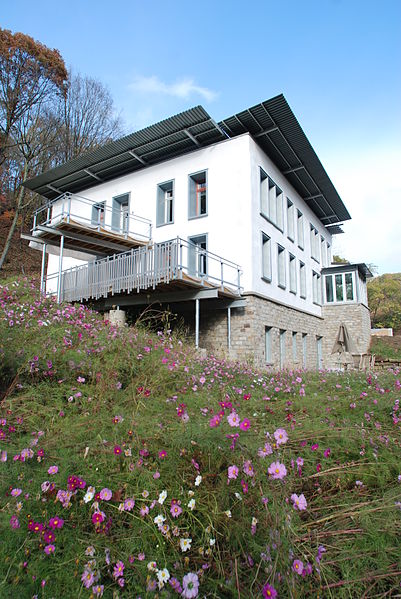7.2 Assessment Tools for Sustainable Buildings
LEED rating system was developed by the U.S. Green Building Council (USGBC) in order to promote a holistic approach to construction and to encourage green certification of buildings. Rating systems developed under LEED allow projects to earn points in a number of categories that comprise the sustainability profile of the building project. LEED certification is flexible enough to apply to various facilities: homes, schools, healthcare facilities, large public sites, and even entire neighborhoods. Currently, it is a nationally recognized certification program.
The main categories of assessment in which buildings can obtain credits are:
- Sustainable sites
- Water efficiency
- Energy and atmosphere
- Materials and resources
- Indoor environmental quality
Go to the LEED website to review the LEED rating systems. Here is the link to LEED Credit Library, which you may want to browse to see how points are scored by various building design features. Certification through LEED is quite a sophisticated process, which requires disclosure of a large amount of data, so it would be best for us to turn to specific examples of LEED-certified projects to understand how this assessment works.
Reading Assignment:
Look through the case studies of LEED certified projects on pp. 35-67 of the document "Regional Green Building Case Study Project: A post‐occupancy study of LEED projects in Illinois". Choose at least three different cases to read in detail.
Pay attention to the specific metrics used to compare different buildings. Some of those metrics are: energy use intensity (EUI) (see definition on p. 9), CO2 emissions, and water use (see definition on p.18).
This reading material is available in the Lesson 7 Module in Canvas.
The comprehensive approach and broad scope of the LEED certification has an advantage of wide applicability. So the whole buildings of various size, location, and function can be evaluated within the same system. At the same time, sometimes you can see buildings that are very energy efficient, zero-carbon, water-conserving, and still are not LEED-certified, just because they do not cover all the multiple attributes necessary for that certification. Because of that, it is sometimes useful to apply a single metric to evaluate one specific feature or function of a building.
For example, ENERGY STAR is a single-attribute rating system that only evaluates energy performance. WaterSense is a single-attribute rating system for water conservation. There are a number of other systems and metrics. Some of those will be considered in the following sections under the specific attributes they relate to.
There are four principles that a good assessment system should follow - it should be:
- science-based – results and decisions must be reproducible by others using the same approach;
- transparent – the standards and scoring procedure should be open for examination;
- objective – there should be no conflict of interest in the certification body;
- progressive –the system should advance industry practices.
Here are some examples of sustainable buildings in the U.S.:
The Philip Merrill Environmental Center is recognized as one of the "greenest" buildings ever constructed in the United States. When it was constructed, special consideration was given to material selection and energy use. This facility was the first building to receive a Platinum rating through the U.S. Green Building Council's LEED Rating System.
Pittsburgh's 1,500,000-square-foot David L. Lawrence Convention Center was the largest "green" building in the world, when it opened in 2003. It received Platinum LEED certification in 2012.
Sota Construction Services office building (Pittsburgh, PA) features a super-efficient thermal envelope using cob walls. It also has other energy-saving features: a geothermal well, radiant heat flooring, roof-mounted solar panel array, and day-lighting features. It earned a LEED Platinum rating in 2012 and received one of the highest scores by percentage of total points earned in any LEED category, making it the "greenest" building in Pennsylvania and in the top ten greenest in the world.

Supplemental Reading
More information on LEED and other building rating systems is given in the following optional reading:
Macaluso, J., Chapter 9. Rating Systems, Standards, and Guidelines (pp. 236-257), in Green Building: Project Planning and Cost Estimating, RSMeans, John Wiley & Sons Inc., 2011 [available online through PSU library system].
LEED summary is provided in pages 236-238. Some other whole-building assessment systems, including those developed in European nations, are briefly described on pp. 241-247. Some of the single-attribute rating systems are described on. 248-257.
